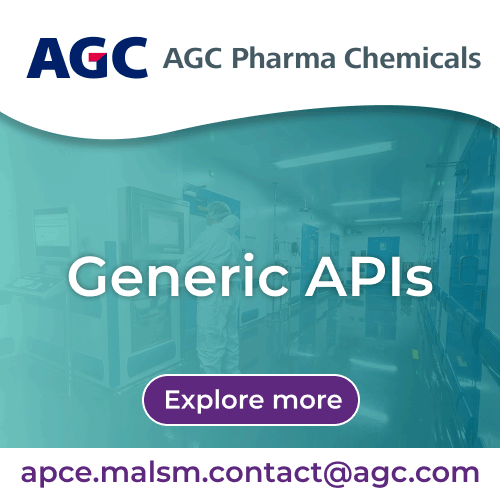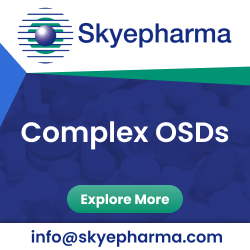Overview of hazardous chemistry & hazardous chemical reactions, organic synthesis, large scale production & CDMOs & CMOs offering such services.
Q1. What is hazardous chemistry?
Hazardous chemistry is a technology that involves the use of hazardous reagents or highly energetic reactions for the organic synthesis of APIs and intermediates. These chemicals, which can include solvents, raw materials, cleaning agents, and catalysts, are categorized based on their potential risks to health and property.
The use of hazardous chemistry reactions is well established for the commercial organic API synthesis, and offered by CDMOs & CMOs. API manufacturing services involve the use of various hazardous chemicals such as corrosive and irritant agents; acids, bases, oxidizing and reducing agents, and many more which may be found at very high concentrations and are injurious to health.
Hazardous chemicals are substances, mixtures and articles that can pose a significant risk to health and safety if not managed correctly. Adverse health effects include poisoning, breathing problems, skin rashes, allergic reactions, allergic sensitisation, cancer, and other health problems from exposure. They may also cause fires, explosions, corrosion, and hazardous chemistry reactions if not handled safely. So it is important to handle hazardous chemicals properly and minimize hazardous chemical waste.
Some Examples of Hazardous Chemicals:
- Drugs
- Toxic chemicals
- Chemicals that cause skin damage
- Carcinogens
- Flammable liquids
- Oxidizers
- Compressed gasses
- Explosives
- Paints
Hazardous chemicals may enter the human body via ingestion, inhalation, absorption, or even injections. Therefore, strict guidelines have been created and enforced by various agencies (Occupational Safety & Health Administration, National Fire Protection Association, Environmental Protection Agency & Department of Transportation) to ensure the proper handling of chemical hazards and to minimize hazardous chemical waste.
Some of these rules are listed below:
- Being precautious
- Always following the procedures set in place
- Ensuring proper labeling & storage of chemicals
- Reading labels of all chemicals
- Wearing proper protective gear (PPE) and keeping work stations clean
- Planning ahead
- Never eating or drinking while handling chemical materials
- Learning about emergency procedures and equipment.
Certain hazardous chemical reactions, which are generally regarded as harmful, offer a more direct route to the end product, requiring fewer raw materials and involving a limited number of side reactions. As a result, the number of steps in a process are essentially reduced, when compared to conventional synthesis.
Some Other Benefits of Hazardous Chemistry Services Include:
- Cleaner chemistry with fewer or no side reactions
- A more direct route with fewer processing stages
- Reduced cost; consuming less material and minimizing waste
- Simpler purification and reduced processing times
- Reduced need for capital equipment
Q2. What are the different types of hazardous chemistry reactions offered by the pharmaceutical industry?
As new chemical entities (NCEs) with greater molecular complexity enter drug development pipelines, the demand for hazardous chemistry techniques is growing. Hazardous chemistry can provide access to synthetic routes of production for active pharmaceutical ingredients (APIs), raw materials, intermediates, etc. which overall involve fewer processing stages.
Prominent examples of hazardous chemical reactions include:
1. Nitrations
Nitration is the process of adding a nitro group (NO2) to a benzene ring. All nitration reactions are potentially hazardous because of the explosive nature of products and the strong oxidizing tendency of the nitrating agent. The nitration and oxidation side reaction are highly exothermic. These reactions may be extremely rapid and can become uncontrollable, therefore, close temperature control must be maintained.
2. Oxidations
Oxidation chemically converts hazardous contaminants to non-hazardous or less toxic compounds that are more stable, less mobile, and/or inert. The oxidizing agents most commonly used are ozone, hydrogen peroxide, hypochlorites, chlorine, and chlorine dioxide. However, these are hazardous reagents and need to be handled properly.
3. Hydrogenations
Hydrogenation is a reduction reaction which results in an addition of hydrogen to organic substrates. If an organic compound is hydrogenated, hydrogen atoms are added to it. The most common catalysts used in hydrogenation reactions include nickel, platinum, or palladium. Due to these flammable, hazardous reagents and solvents, hydrogenation reactions pose a significant fire hazard. Furthermore, the presence of hydrogen gas increases the risk of explosion.
4. Halogenation
Halogenation involves the reaction of a compound with a halogen and results in the halogen being added to the compound. Halogenation reactions are highly exothermic for halogens, particularly fluorine, and produce a lot of heat so much so that they may cause explosions over broad concentration ranges. Halogens also present severely challenging corrosion problems.
5. Alkylations
Friedel–Crafts alkylations utilize hazardous catalysts such as metal hydrides, which need to be handled with caution. Leaks, spills, or releases involving hydrofluoric acid, sulfuric acid, hydrocarbons containing hydrofluoric acid can be extremely hazardous. They may also pose environmental hazards due to metal leaching, non-recyclability, etc.
6. Carbonylation
Gaseous carbon monoxide, in palladium-catalyzed reactions, is used for the carbonylation of aryl halides to produce esters, amides, ketones or aldehydes. Use of carbon monoxide for the carbonylation of aryl halides in aryl esters is a shortcut route compared to a standard 3-step synthesis via a Grignard reagent formation. Due to the use of highly reactive agents these reactions are potentially hazardous.
7. Reactions involving unstable or highly active compounds such as azides, nitrate esters, diazo compounds, highly potent substances - HPAPIs, etc.
Q3. What are the steps involved in hazardous chemistry from process development to large scale production?
Hazardous chemistry from early development to large scale commercial manufacturing is completed in the steps, noted below.
Step 1: Early Development
- Chemical Hazard Evaluation Studies
Hazard assessment and analysis are crucial steps, which must be performed during the early stages of hazardous chemistry. Several studies must be planned and carried out to identify chemical hazards such as agents, conditions, or activities that have the potential to cause injury, illness, or damage to the environment.
- Route Scouting
Keeping in mind the results from the chemical hazard evaluation studies, route scouting plays a key role in drug development and provides new routes of pharmaceutical manufacturing which are shorter, safer, cost-effective, sustainable, and have a lower impact on the environment.
Step 2: Process Development & Scale Up
- Process development
The highly explosive nature of some of the hazardous reagents used in hazardous chemical reactions demand extensive know-how, high safety standards, and strict process controls prior to implementing small scale and large scale production. Process development is the strategy via which a process for pharmaceutical manufacturing is identified for a drug substance from an early stage through scale-up and tech transfer to commercialization.
- Scale-up & technical batches
Scale up is generally defined as the process of increasing batch sizes. In process scale up, a formula is transformed into a viable, robust product by the development of a reliable and practical method of pharmaceutical manufacturing that affects the orderly transition from laboratory to routine processing in a large scale production facility. Successful scale up of exothermic, hazardous chemical reactions relies critically on the data and understanding developed during process development.
Step 3: Validation
- Process analytical validation
Process validation is defined as the collection and analysis of data, from the process development and design stage through to production, which establishes scientific evidence that a process is capable of consistently delivering quality products which are not harmful for consumption.
- Cleaning validation
Effective cleaning shall be in place to provide documented evidence that the cleaning methods employed within a facility consistently controls potential carryover of product (including intermediates and impurities), cleaning agents and extraneous material into subsequent products to a level which is below predetermined levels. Cleaning validation verifies that this is true.
Step 4: Large Scale Production or Commercial Manufacturing
- Routine production
The development of organic compounds (APIs, intermediates, etc) formed from hazardous chemistry reactions is usually followed by large scale production or commercial manufacturing at an industrial scale which produces bulk quantities of the desired products, which further undergo packaging and ultimately, distribution.
- Life cycle management
Pharmaceutical lifecycle management, the process of managing the entire lifecycle of a product including its research, design and manufacture, service and disposal, is also employed when it comes to hazardous chemistry.
Q4. Which are the leading CDMOs and CMOs offering hazardous chemistry services?
There are numerous CDMOs and CMOs offering hazardous chemistry services for APIs, intermediates, and other drug substances while producing minimal hazardous chemical waste. Some of the leading contract service providers offering hazardous chemistry reactions are listed below.
SANOFI Active Ingredient Solutions
Sanofi Active Ingredient Solutions (SAIS) covers both API sales and contract development and pharmaceutical manufacturing. They provide expertise in quality, regulatory and supply and have dedicated commercial teams for customers around the globe.
SAIS also functions as a hazardous chemistry CMO service provider. Their services include organic synthesis of APIs and organic synthesis of hazardous raw materials. They offer API manufacturing services and have extensive experience with organic chemistry and the complex organic synthesis of hazardous raw materials.
PMC Isochem
As a leading contract drug development and manufacturing organization (CDMO), PMC masters complex processes and can manufacture products to the most stringent pharmaceutical regulatory standards. Their technical strengths include high-pressure chemistry, low-temperature chemistry, hazardous chemistry, and peptide chemistry for the commercial synthesis of APIs and intermediates.
Over the years, PMC Isochem has developed a versatile technology platform offering customers competitive development and cGMP API manufacturing services, with a strong foundation in hazardous chemistry.
Minakem
Minakem is a fully integrated contract development and manufacturing organization (CDMO) and provides commercial HPAPI & API manufacturing services for pharmaceutical companies.
Minakem is a leader in certain technologies such as flow chemistry, hazardous chemistry (nitration, hydrazine, DMS, epichlorohydrin, etc.), multi-step organic synthesis, cyanidation, chemical reduction and low-temperature chemistry for commercial synthesis of APIs and intermediates.
Polpharma
Polpharma offers complex chemistry services including hazardous chemistry, organometallic chemistry, amino acids and peptide chemistry as well as solid state chemistry.
Their key hazardous chemistry services include grignard chemistry, hydrogenation, reactions with lewis acids, reactions with liquid and/or gas ammonia and chlorine, bromination, bisphosphonation, chemoinformatics, and friedel-crafts alkylation, amongst others for the commercial synthesis of APIs and intermediates.
All Suppliers

















 EUROAPI, the leading small molecules API player, provides both API sales & CDMO services.
EUROAPI, the leading small molecules API player, provides both API sales & CDMO services.











